 W
WAbernethy is a village in Perth and Kinross, Scotland, situated 8 miles (13 km) south-east of Perth.
 W
WArbirlot is a village in a rural parish of the same name in Angus, Scotland. The current name is usually presumed to be a contraction of Aberelliot or Aber-Eliot - both meaning the mouth of the Elliot. It is situated west of Arbroath. The main village settlement is on the Elliot Water, 2.5 miles from Arbroath. There is a Church of Scotland church and a primary school. The school lies 1 mile further west in the approximate geographic centre of the parish.
 W
WBardsey Island, known as the legendary "Island of 20,000 Saints", is located 1.9 miles (3.1 km) off the Llŷn Peninsula in the Welsh county of Gwynedd. The Welsh name means "The Island in the Currents", while its English name refers to the "Island of the Bards", or possibly the Viking chieftain, "Barda". At 179 hectares in area it is the fourth largest offshore island in Wales, with a population of only 11.
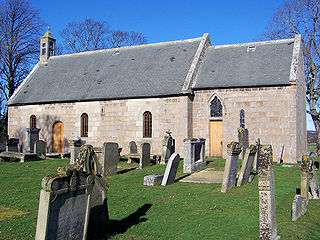 W
WBirnie Kirk is a Church of Scotland church situated 4 km south of Elgin, in Moray. The church was built c. 1140 and became the first cathedral of the Bishop of Moray. It remained the cathedral church until 1184 when Bishop Simon de Tosny died. His successor Richard de Lincoln moved the seat to the church of Kinnedar. The church is one of the oldest in Scotland to have been in continuous use.
 W
WBrechin Cathedral dates from the 13th century. As a congregation of the Church of Scotland, which is Presbyterian, the church is not technically a cathedral, in spite of its name.
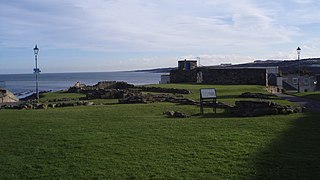 W
WThe Church of St Mary on the Rock or St Mary's Collegiate Church, was a secular college of priests based on the seaward side of St Andrews Cathedral, St Andrews, just beyond the precinct walls. It is known by a variety of other names, such as St Mary of the Culdees, Kirkheugh and Church of St Mary of Kilrymont.
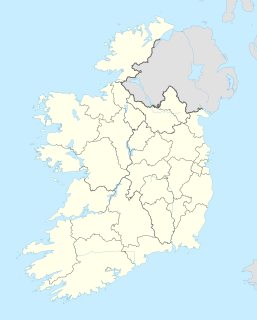 W
WClones Abbey is a ruined monastery that later became an Augustinian abbey in the twelfth century, and its main sights are ecclesiastical. The Abbey was formerly known as St. Tighernach Abbey, and was referred to locally as the "wee abbey". Parochial and monastic settlements were separated, and it seems likely that the building became the Abbey of St. Peter and Paul.
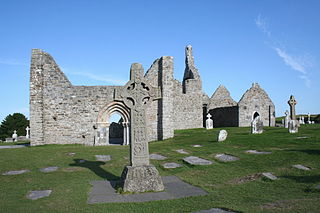 W
WClonmacnoise is a ruined monastery situated in County Offaly in Ireland on the River Shannon south of Athlone, founded in 544 by Saint Ciarán, a young man from Rathcroghan, County Roscommon. Until the 9th century it had close associations with the kings of Connacht. Saint Ciarán chose to found the monastery in the ancient territory of Ui Maine at a point where the major East-West land route meets the River Shannon after crossing the bogs of Central Ireland known as the Esker Riada. The strategic location of the monastery helped it become a major centre of religion, learning, craftsmanship, and trade by the 9th century; and together with Clonard it was one of the most famous places in Ireland, visited by scholars from all over Europe. From the ninth until the eleventh century it was allied with the kings of Meath. Many of the high kings of Tara (ardrí) and of Connacht were buried here.
 W
WDevenish or Devinish is an island in Lower Lough Erne, County Fermanagh, Northern Ireland. Aligned roughly north–south, it is about one and a quarter miles (2km) long and two-thirds of a mile (1km) wide. The main place to catch a ferry to the island is at Trory Point, just outside Enniskillen. Devenish Island is owned by the Kilvarock Christian Trust.
 W
WDísert Óengusa is a medieval hermitage and National Monument located in County Limerick, Ireland.
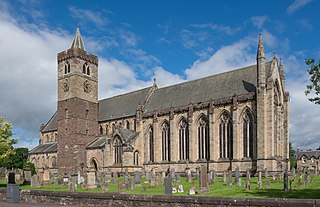 W
WDunblane Cathedral is the larger of the two Church of Scotland parish churches serving Dunblane, near the city of Stirling, in central Scotland.
 W
WDunkeld Cathedral is a Church of Scotland place of worship which stands on the north bank of the River Tay in Dunkeld, Perth and Kinross, Scotland. Built in square-stone style of predominantly grey sandstone, the cathedral proper was begun in 1260 and completed in 1501. It stands on the site of the former Culdee Monastery of Dunkeld, stones from which can be seen as an irregular reddish streak in the eastern gable.
 W
WFortrose Cathedral was the episcopal seat (cathedra) of the medieval Scottish diocese of Ross in the Highland region of Scotland. It is probable that the original site of the diocese was at Rosemarkie, but by the 13th century the canons had relocated a short distance to the south-west, to the site known as Fortrose or Chanonry. According to Gervase of Canterbury, in the early 13th century the cathedral of Ross was manned by Céli Dé (culdees).
 W
WKilmore or Killmore is a small village, townland and civil parish in County Armagh, Northern Ireland. It lies 2.5 miles (4 km) north of Richhill and within the Armagh City, Banbridge and Craigavon Borough Council area. It had a population of 190 people in the 2011 Census.
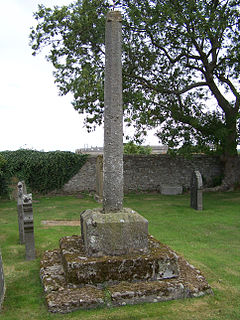 W
WKinneddar is a small settlement on the outskirts of Lossiemouth in Moray, Scotland, near the main entrance to RAF Lossiemouth. Long predating the modern town of Lossiemouth, Kinneddar was a major monastic centre for the Pictish kingdom of Fortriu from the 6th or 7th centuries, and the source of the important collection of Pictish stones called the Drainie Carved Stones. The Kirk of Kinneddar was the cathedral of the Diocese of Moray between 1187 and 1208, and remained an important centre of diocesan administration and residence of the Bishop of Moray through the 13th and 14th centuries.
 W
WKilmore or Killmore is a small village, townland and civil parish in County Armagh, Northern Ireland. It lies 2.5 miles (4 km) north of Richhill and within the Armagh City, Banbridge and Craigavon Borough Council area. It had a population of 190 people in the 2011 Census.
 W
WMonifieth is a town and former police burgh in the council area of Angus, Scotland. It is situated on the north bank of the Firth of Tay on the east coast. In 2016, the population of Monifieth was estimated at 8,110, making it the fifth largest town in Angus.
 W
WMuthill, pronounced, is a village in Perth and Kinross, Perthshire, Scotland. The name possibly derives from Moot hill, a place of judgement.
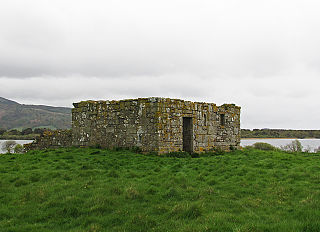 W
WThe St Serf's Inch Priory was a community of Augustinian canons based, initially at least, on St Serf's Inch in Loch Leven, Perth and Kinross, Scotland.
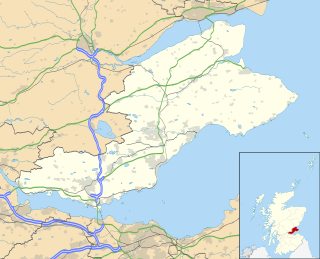 W
WLeven is a seaside town in Fife, set in the east Central Lowlands of Scotland. It lies on the coast of the Firth of Forth at the mouth of the River Leven, 8.1 miles (13.0 km) north-east of the town of Kirkcaldy and 6.4 miles (10.3 km) east of Glenrothes.
 W
WSligo Abbey was a Dominican convent in Sligo, Ireland, founded in 1253. It was built in the Romanesque style with some later additions and alterations. Extensive ruins remain, mainly of the church and the cloister.
 W
WSpynie Palace, also known as Spynie Castle, was the fortified seat of the Bishops of Moray for about 500 years in Spynie, Moray, Scotland. The founding of the palace dates back to the late 12th century. It is situated about 500 m from the location of the first officially settled Cathedral Church of the Diocese of Moray, Holy Trinity Church in present-day Spynie Churchyard. For most of its occupied history, the castle was not described as a palace — this term first appeared in the Registry of Moray in a writ of 1524.
 W
WSt Patrick's Cathedral, Armagh is the seat of the Archbishop of Armagh in the Church of Ireland. It is located in Armagh, Northern Ireland. It is also the cathedral of the Diocese of Armagh. It is one of two cathedrals named after Saint Patrick in Armagh, the other being Roman Catholic.
 W
WSaint Tudwal's Islands are a small archipelago lying south of Abersoch on the Llŷn Peninsula in North Wales, at the western end of Tremadog Bay. They were apparently referred to as the Studwells in the early 19th century.
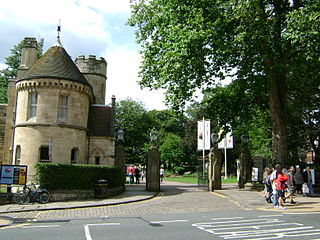 W
WThe York Museum Gardens are botanic gardens in the centre of York, England, beside the River Ouse. They cover an area of 10 acres (4.0 ha) of the former grounds of St Mary's Abbey, and were created in the 1830s by the Yorkshire Philosophical Society along with the Yorkshire Museum which they contain.